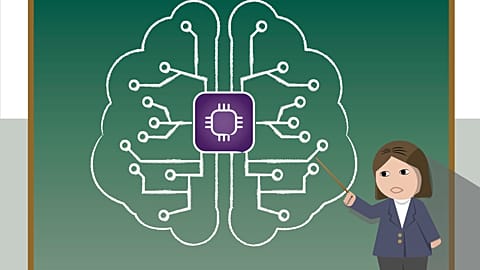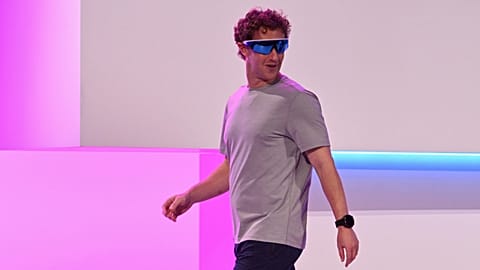If you work remotely, you’re probably familiar with the sound of Teams or Slack notifications. Experts think this digital noise is stressing us out.
Digital tools are taking up more and more space in the workplace and serving as facilitators. However, they also carry the risk of "digital stress," as a recent study indicates that 31 per cent of employees are exposed to hyperconnectivity.
"These tools, such as emails, teleconferencing tools, internal messaging, Internet access, etc have disrupted our lives," Professor William Dab, an epidemiologist and former Director-General of Health, said during a conference titled ‘Digital Stress, an Emerging Risk’.
"Could it be that these tools, or more precisely, the ways in which we use these tools, are turning against us?" he questioned during his intervention at a trade fair dedicated to health and safety at work.
"What I find challenging, especially recently post-COVID and during lockdowns, is the proliferation of channels, to the point where we don't know where things are coming from," said Adrien Debré, a lawyer at a business firm, in an interview with AFP.
"It makes managing the flow of information difficult. It's like a set of Matryoshka that need to be opened," he said.
With remote work and increasingly decentralised organisations, "we are behind our screens all day long," Jérôme, a manager in the banking sector who preferred not to give his last name, added. Even in the office, video meetings are "rampant".
"It's exhausting," he added.
According to Dab, we speak of "digital stress" when the quantity of available information that we need to process exceeds our capacity, a phenomenon also labelled as "information overload," "digital hardship," or "technostress”.
The ‘well-known’ consequences of stress
In the eyes of the epidemiologist, the central phenomenon is "over-connection," which can lead to "mental overload".
He points out "a vicious circle with a continuous pressure that makes us jump from one source of information to another," and the feeling at some point of "losing control".
This is a situation of stress "whose extreme form is burnout”.
"As a doctor, I analyse this as a new form of addiction," the consequences of which are still poorly understood, even though the consequences of stress are "well known," says Dab.
These consequences are not only mental but also associated with an "increase in cardiovascular risks, metabolic risks," and "immune effects".
Moreover, stress diminishes performance, and digital tools, while opening the door to remote work, also put us in a situation of isolation. "In short, these tools that are so helpful to us can also impair health and quality of work-life," he said.
To illustrate the "few data" on the subject, Dab cites a study published in mid-May.
Conducted by the Observatory of Information Overload and Digital Collaboration, it was carried out, in particular, through the analysis of emails from nearly 9,000 people continuously for two years.
31 per cent of employees are exposed to hyperconnectivity
Although the study does not claim to have statistical value due to the small sample size of companies (10), it shows that 31 per cent of employees are exposed to hyperconnectivity by sending emails after 8.00 pm more than 50 evenings per year (117 evenings for executives).
Furthermore, over 50 per cent of emails receive a response in less than an hour, and these messages generate "a lot of digital noise," with 25 per cent of it attributed to "replying to all”.
The study also measured periods of "full concentration" (one hour without sending emails). For executives, their weekly share is only 11 per cent (24 per cent for managers and 42 per cent for employees).
This means "a loss of meaning, efficiency and depth of analysis" for the epidemiologist. "We may be reaching a threshold of toxicity".
But "we can do something about it", the epidemiologist assures us: by restricting information to "what is really essential", by keeping "slots where the screen is closed", or by physical or relaxing activities.
Ultimately, it's a question of "not letting ourselves be possessed in the same way we do not let ourselves be possessed by drugs".


















